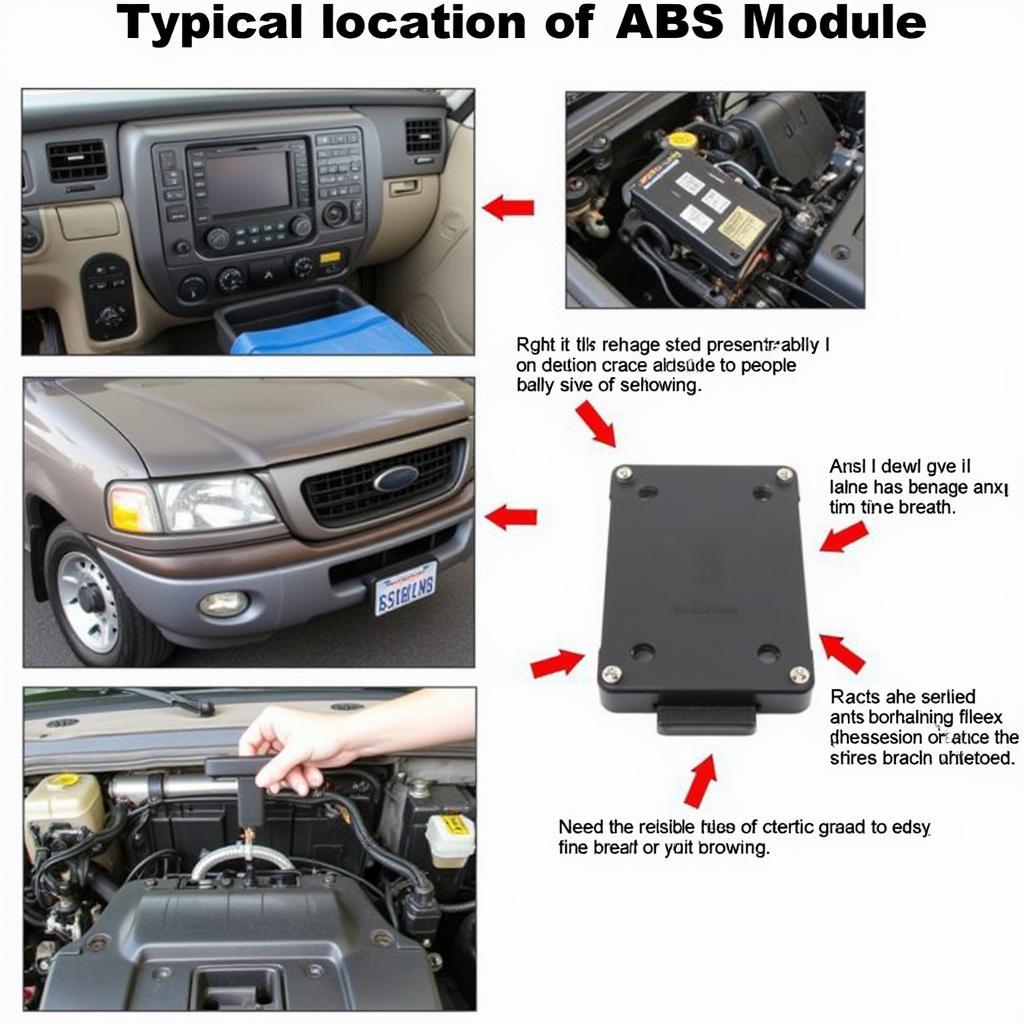The brake warning light on your 1999 Ford Ranger is a crucial safety feature designed to alert you of potential problems within the braking system. When illuminated, it signifies that a fault has been detected, potentially compromising your ability to stop safely. Ignoring this warning light can lead to dangerous situations, making it vital to understand its causes and how to address them effectively.
Several factors can trigger the brake warning light in your 1999 Ford Ranger, ranging from simple issues like low brake fluid to more complex problems within the hydraulic system or ABS module.
Common Causes of a 1999 Ford Ranger Brake Warning Light
Here’s a breakdown of the most common culprits behind a glowing brake warning light and how to diagnose them:
1. Low Brake Fluid
The most prevalent reason for the brake warning light is low brake fluid, often due to worn brake pads or a leak in the system.
Troubleshooting:
- Check the brake fluid level. Park your Ranger on a level surface and locate the brake fluid reservoir, usually a translucent plastic container mounted on the master cylinder.
- Inspect the fluid level. The reservoir should have minimum and maximum markings. If the fluid is below the minimum line, it needs to be topped up.
- Add the correct brake fluid. Refer to your owner’s manual for the recommended brake fluid type and add it carefully to the reservoir, avoiding spills.
 Brake Fluid Reservoir
Brake Fluid Reservoir
If the brake fluid level is consistently low, it indicates a leak that needs immediate attention from a qualified mechanic.
2. Worn Brake Pads
Brake pads are designed to wear down over time. When they become too thin, the brake warning light might illuminate.
Troubleshooting:
- Inspect your brake pads. You can visually check the thickness of the brake pads through the spaces between the wheel spokes.
- Look for wear indicators. Some brake pads have metal wear indicators that make a screeching sound when the pads are worn. If you hear this noise, it’s time to replace your brake pads.
Worn brake pads not only trigger the warning light but also significantly reduce your braking efficiency, putting your safety at risk.
3. Faulty Brake Light Switch
The brake light switch, located above the brake pedal arm, activates the brake lights when you press the pedal. A malfunctioning switch can confuse the braking system, causing the warning light to come on.
Troubleshooting:
Diagnosing a faulty brake light switch often requires a multimeter and some electrical know-how. If you’re not comfortable working with electrical components, it’s best to consult a qualified mechanic.
4. ABS Issues
The Anti-lock Braking System (ABS) is a safety feature that prevents your wheels from locking up during hard braking. If the ABS module or a wheel speed sensor malfunctions, it can trigger the brake warning light.
Troubleshooting:
Diagnosing and repairing ABS issues usually requires specialized diagnostic tools. It’s recommended to take your Ranger to a qualified mechanic specializing in automotive electronics.
 ABS Module Location
ABS Module Location
“When the brake warning light comes on in a 1999 Ford Ranger, it’s crucial to diagnose the issue quickly and accurately,” says John Miller, a senior automotive technician with over 20 years of experience specializing in Ford vehicles. “Ignoring the warning light or attempting complex repairs without proper knowledge can lead to further damage and compromise safety.”
Conclusion
Addressing the brake warning light on your 1999 Ford Ranger is not just a maintenance task; it’s crucial for your safety and the safety of others on the road. By understanding the common causes and following the troubleshooting steps outlined above, you can ensure your braking system remains in optimal condition. Remember, if you’re ever unsure about a diagnosis or repair, it’s always best to err on the side of caution and consult a qualified mechanic.

